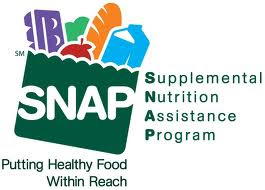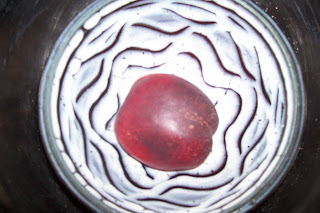
I have been working the last few weeks on a presentation about food security.
The main thrust of it is supposed to be about how most Americans live in communities that are food insecure independent of the fact that so many Americans are themselves food insecure.
“Food Insecurity” is a term used to talk about a person’s ability to provide healthy nutritious food for him or herself.
The USDA says that a person is food insecure if he or she does not have reliable access to 21 healthy meals a week.
A community is said to be food insecure if there isn’t enough food in that community for the same.
By that measure, most American communities are food insecure since most rely on food being trucked in every few days.
Most communities would be without food in three or four days without those trucks.
We saw some of that after Hurricane Katrina—there was no way to get food in after the wake of the natural disaster.
And during the winter of 2008-2009 in the Spokane area there were some shortages of particular items in grocery stores because the passes to and from the west side were closed and the trains were not running reliably either.
But food security is taking another blow in America.
This morning
the Huffington Post ran a story about proposed cuts to the Food Stamp Program which would decrease the amount of the benefit so many people rely on in the face of food insecurity.
This is a real problem.
As it is, the Food Stamp Program has always been intended to supplement what people spend on food, but for many people, it is all they can spend on food given other bills, often medical in nature.
An investment in nutrition is multi-fold and the government needs to understand that.
Malnutrition in children can lead to permanent problems since lack of nutrition at various developmental stages cannot be overcome later.
And an investment in nutrition, if done correctly, can also benefit farmers as it keeps people buying.

Now, you might say, many people who are on Food Stamps don’t buy the healthiest food.
And that is true.
That might speak to some reforms of the Food Stamp Program, but not to an elimination of some of its funding.
Two main reasons people buy unhealthy food are that unhealthy food represents the most calories per dollar spent—healthy food just costs more—and people don’t have the knowledge or the time to cook for themselves.
So maybe this speaks to putting more money, not less, into Food Stamps and giving people the knowledge about how to cook what they buy.
It speaks also to making sure that farmers markets have the ability to take Food Stamps so they get some of that money to stay in the local community and to help and other demographic that needs support and that people who get this assistance have access to fresh, healthy food.

Recently at a meeting of local food activists we were lamenting that a lot of people just don’t know how to cook for themselves any more.
I used an example my Father talks about in the running of his church’s food pantry—people will happily take jarred spaghetti sauce for pasta, but won’t take canned crushed tomatoes for sauce.
Maybe they don’t have the money for the spices that would make it into sauce, maybe they are relying on their children to be able to make the dinner for themselves, and maybe they don’t know how to make sauce in the first place.
But some of these things are remediable.
Teaching people about how to eat healthy, how to best use the benefits they get, and to make sure that the benefit they receive is really adequate is something we all have to be concerned about in order to have a healthy and strong community.
If I eat ethically I help a little.
If I push to get others to eat ethically I help more.
If I work within my community to try to make ethical eating available to all I help even more.
If I work to make sure that the country’s policies and programs are designed with ethical eating in mind I have done my job.
The next thing I write today will be letters to my congressional representative and my senators.
Think about doing the same.
 I buy my eggs from the co-op or from the farmers market so I know what I am getting. I get some really pretty eggs with golden yolks and I have spoken with the farmers who raised the chickens in sustainable ways where the chicken gets to live a fairly reasonable chicken life before the eggs are laid and I get them home. I pay a lot more for them. Often more than 50 cents a piece. But they are worth it. Not only are the eggs better, but I prefer to pay my costs up front. Fewer externalities here.
I buy my eggs from the co-op or from the farmers market so I know what I am getting. I get some really pretty eggs with golden yolks and I have spoken with the farmers who raised the chickens in sustainable ways where the chicken gets to live a fairly reasonable chicken life before the eggs are laid and I get them home. I pay a lot more for them. Often more than 50 cents a piece. But they are worth it. Not only are the eggs better, but I prefer to pay my costs up front. Fewer externalities here. This situation also reminds me that the FDA needs some teeth. Part of the reason they are ineffective is that they don't have the authority to do what they need to protect Americans from food borne illness. They need more inspectors and the authority to initiate and enforce mandatory recalls. And then we need a new farm bill that reduces the attractiveness of the option to have the kinds of factory farms and monocultures that these eggs came from and from which the vast majority of modern food borne illness outbreaks originate.
This situation also reminds me that the FDA needs some teeth. Part of the reason they are ineffective is that they don't have the authority to do what they need to protect Americans from food borne illness. They need more inspectors and the authority to initiate and enforce mandatory recalls. And then we need a new farm bill that reduces the attractiveness of the option to have the kinds of factory farms and monocultures that these eggs came from and from which the vast majority of modern food borne illness outbreaks originate.





















